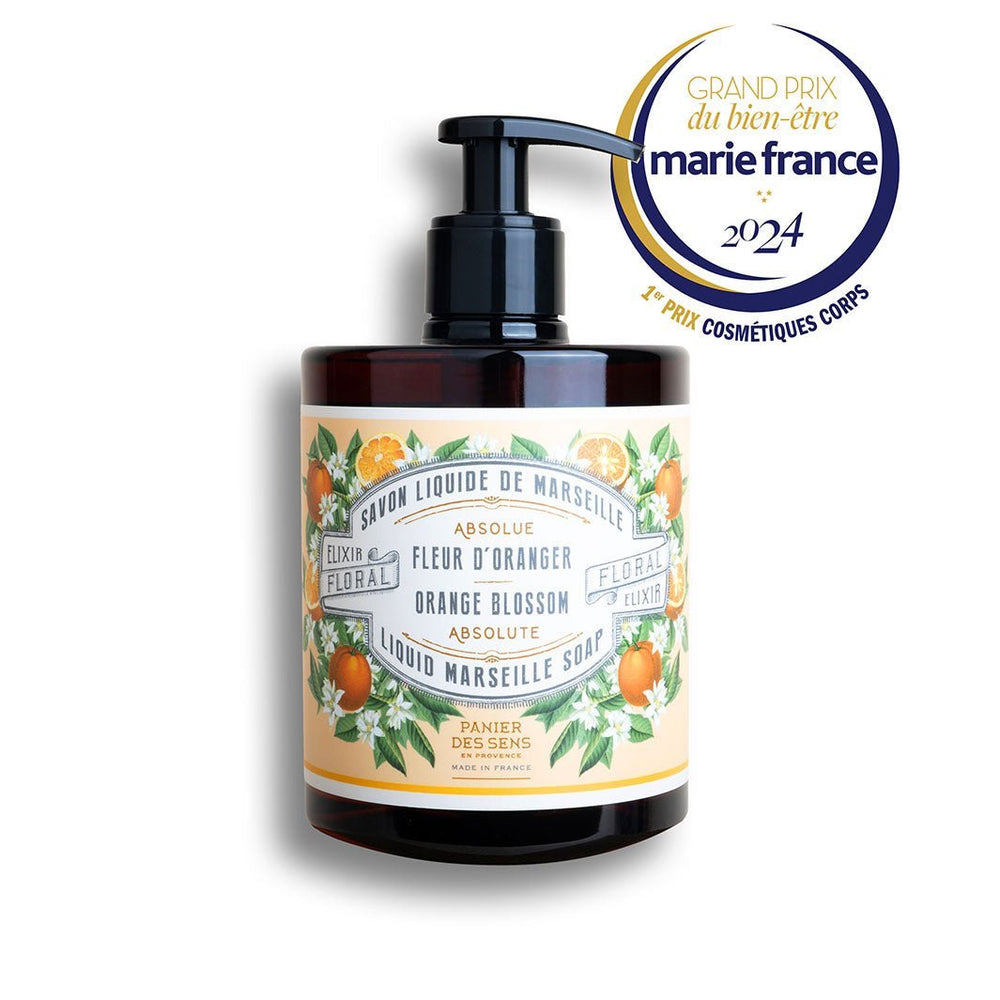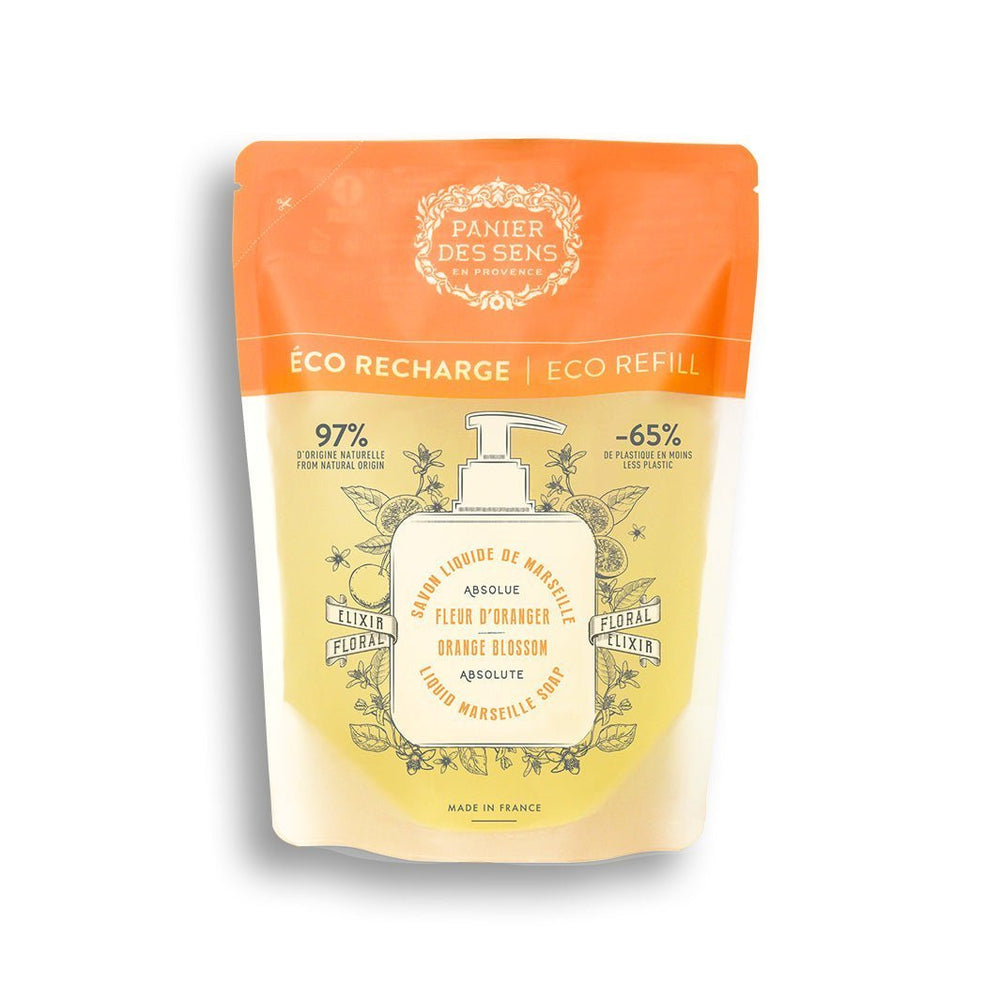Eau de toilette : everything you need to know
L'eau de toilette occupies a special place, combining subtlety and sophistication. Have you ever wondered how to choose the perfect fragrance, or what distinguishes an eau de toilette from a perfume or eau de parfum? From the complexity of its ingredients to the delicate art of its application, it's essential to understand every aspect to better appreciate this bewitching creation.
We'll guide you through the criteria for selecting the right eau de toilette for your skin, detail the top, middle and base notes that make up this nectar, and explain how to optimize its all-day wear. Also explore the unique world of eaux de toilette from Grasse, where tradition and innovation meet to offer exceptional creations.

How to choose an eau de toilette ?
Criteria for selecting the right eau de toilette for your skin
Choosing the right eau de toilette for you may seem complex, but there are a few key criteria to guide you. First, it's essential to know your skin type. Dry skin tends to retain fragrances less well than oily skin. So, if your skin is dry, choose eaux de toilette with more intense, longer-lasting notes.
Next, consider personality and lifestyle. For a dynamic, sporty person, an eau de toilette with fresh, invigorating notes such as citrus or aromatic herbs would be ideal. For someone more reserved and sophisticated, floral or woody notes will bring that subtle, elegant touch.
Finally, don't forget that fragrance reacts differently according to each person's unique body chemistry. It is therefore advisable to try several fragrances directly on your skin before making a final choice.
Differences between eau de toilette, eau de parfum and perfume
The difference betweeneau de toilette, eau de parfum and perfume lies mainly in their concentration of aromatic oils. This concentration directly influences the intensity and longevity of the fragrance on your skin.
- Eau de toilette (EDT): with a concentration of aromatic oils generally ranging from 5% to 15%,eau de toilette offers a light, subtle fragrance that's perfect for everyday use. Spray generously for a refreshing effect all day long.
- Eau de parfum (EDP): more concentrated than EDT, with around 15% to 20% aromatic oils, eau de parfum provides a more intense, long-lasting fragrance. It can be applied in small touches to make an elegant statement without being overpowering.
- Fragrance: the real elixir, with a concentration that can exceed 20%. A few drops are all it takes to leave a bewitching trail that lasts all day or even longer.
So, if you're looking for something airy and discreet for everyday use, opt for an eau de toilette. For special occasions, when you want to make a lasting impression with your olfactory presence, turn to an eau de parfum or even a pure extract.
What ingredients are used in eau de toilette ?
Top, middle and base notes in an eau de toilette
Theeau de toilette is distinguished by its harmonious composition in three olfactory layers: top notes, middle notes and base notes. The top notes, the first to be perceived, offer an immediate but ephemeral freshness. They often include citrus fruits such as bergamot or lemon, as well as aromatic herbs such as mint.
Next come the heart notes, which form the true character of the fragrance. They appear after the top notes have evaporated, and can last for several hours. These middle notes are often floral (rose, jasmine) or spicy (cinnamon, cardamom), bringing depth and complexity to the fragrance.
Finally, the lingering, enveloping base notes define the fragrance's longevity on the skin. They include rich raw materials such as sandalwood, patchouli and vanilla. These elements bring warmth and sensuality to the olfactory ensemble.
Natural versus synthetic ingredients in eau de toilette
The world of eaux de toilette is a skilful blend of natural and synthetic ingredients. The ingredients used in an eau de toilette come mainly from flowers (roses, jasmine), fruits (bergamot, orange) and resins (incense). Their extraction requires ancestral know-how that preserves the very essence of the plants used.
However, to guarantee olfactory consistency and meet today's ecological standards, perfumers also use synthetic molecules. These artificial compounds broaden the creative palette while ensuring greater fragrance stability over time.
A concrete example would be the use of synthetic musk to replace the animal-based musk banned today. This compromise between tradition and innovation enables eaux de toilette to offer a rich sensory experience while respecting the environment.
Each bottle ofeau de toilette is an olfactory masterpiece, combining nature and science to create unique fragrances that enhance your personality.
How do you use an eau de toilette to maximize its hold throughout the day?
Strategic areas for applying eau de toilette
Applying eau de toilette involves more than a few random sprays. To maximize its staying power and reveal the full richness of its aromas, it's essential to target specific areas of the body. Are you familiar with pulse points? These are areas where the skin is warmer, thus favoring fragrance diffusion.
Here are a few practical tips:
- Wrists: apply a small amount to your wrists and leave to dry naturally without rubbing, so as not to alter the olfactory molecules.
- Behind the ears: this discreet zone allows subtle diffusion every time you move your head.
- The nape of the neck and the hollow of the elbows: these parts of the body are ideal for prolonging the enveloping effect of fragrance throughout the day.
- The chest: by applying a littleeau de toilette to your chest, you create an olfactory halo that will stay with you for a long time.
Tips for extending the life of your eau de toilette
To optimize the persistence of your favorite fragrance, a few simple but effective tricks can be implemented. Have you ever thought of layering your scented products? By combining a shower gel or body lotion with your eau de toilette, for example, you can enhance the scent's longevity.
Other techniques include :
- Moisturize beforehand: apply an unscented moisturizer before your eau de toilette. Well-moisturized skin retains fragrance molecules better.
- Spray into the hair: spray your eau de toilette lightly onto your hair or onto a brush before styling. Hair fibers capture and diffuse the aromas beautifully.
- Use a fixative: certain specific products help fragrances adhere better to your skin, prolonging their effect throughout the day.
Don't forget that you can also adjust the intensity to suit the moment or occasion. For example, start with a light application in the morning, then repeat in small touches throughout the day as needed. In this way, you can enjoy the delicate, refined nuances that only an eau de toilette can offer.
How much does the average eau de toilette cost?
Factors influencing the price of eau de toilette
The price of an eau de toilette can vary considerably depending on several parameters. First and foremost, the concentration of essential oils plays a crucial role. A higher concentration means a more intense, longer-lasting fragrance, justifying a higher cost. The ingredients used, whether natural or synthetic, also have an impact on price. For example, an eau de toilette containing rare extracts such as oud oriris may be considerably more expensive.
The origin of the raw materials is also decisive: essences from regions renowned for their quality, such as Grasse in France, add extra value to the product. Finally, let's not forget bottle design and packaging, which can transform a simple perfume into a veritable objet d'art.
Analysis of the different price ranges of eaux de toilette
To better understand the diversity of prices on the eaux eaux de toilettemarket, it is useful to examine the different ranges available:
- Entry-level: these eaux de toilette start at around 20 to 50 euros for a standard bottle (50 ml). They often use synthetic ingredients and offer moderate hold. Ideal for everyday use without breaking the bank.
- Mid-range: between 50 and 100 euros, you'll find products with a higher concentration of essential oils and a more refined composition. Brands in this category strike a balance between quality and affordability.
- Top-of-the-range: starting at 100 euros and rising to several hundred euros, these eaux de toilette are often signed by prestigious houses. They use noble, rare ingredients, offering a unique, sophisticated olfactory experience.
So, whether you're looking for a light fragrance for everyday use or a luxurious elixir for special occasions, there's bound to be an Eau de Toilette to suit you. eau de toilette that's right for you and your budget.
How to recognize an eau de toilette ?
Labeling and packaging for eaux de toilette
When it comes to identifying an eau de toilette, labeling and packaging play a crucial role. You may be wondering how to recognize one eau de toilette among so many? Here are a few things to consider:
- The label: it must clearly stateEau de Toilette" or "EDT". This indication is mandatory, to avoid confusion with other types of perfume.
- The bottle: often eaux de toilette are often presented in bottles of sleek, elegant design, reflecting their light, refreshing nature. Transparent or lightly tinted glass is a common choice to highlight the delicate color of the liquid.
- Packaging: it must include essential information such as the list of ingredients, the volume (generally expressed in milliliters) and the name of the manufacturer. Careful packaging is often a guarantee of quality.
Don't forget that certain visual clues can also help you identify an eau de toilette. For example, bottles are often larger than those of pure perfumes, as they are designed to be used more generously.
The difference between eau de toilette and other types of perfume
The distinction between eau de toilette and other types of perfume lies mainly in their concentration of aromatic oils. But what does this mean for you? Here's a clear overview:
- Eau de Cologne: with a concentration of up to 5% aromatic oils, Eau de Cologne offers a very light fragrance that evaporates quickly. Ideal for daily use or after shaving.
- Eau de Toilette (EDT): generally contains between 5% and 15% aromatic oils. This gives it a subtle but perceptible fragrance, perfect for refreshing throughout the day without being overpowering.
- Eau de Parfum (EDP): avec une concentration située entre 15 % et 20 %, l'eau de parfum dégage une odeur plus intense et durable. Elle convient parfaitement aux occasions spéciales où vous souhaitez laisser une empreinte olfactive marquante.
- Pure fragrance: a true olfactory elixir, it can contain up to 40% aromatic oils. A single drop is enough to envelop your skin in a rich, long-lasting scent for hours or even days.
So, if you're looking for something airy and discreet for everyday use, opt for a eau de toilette. For special occasions, when you want to make a lasting impression with your olfactory presence, turn to an eau de parfum or even a pure extract.
How do you know if an eau de toilette is of good quality?
eau de toilette quality indicators
To determine the quality of an eau de toilette, several criteria can be taken into account. First, the concentration of essential oils plays a crucial role. A top-of-the-range eau de toilette contains between 7% and 12% aromatic oils, guaranteeing a long-lasting, balanced fragrance. The alcohol concentration, often around 70%, also ensures optimal diffusion of aromas.
Next, pay attention to the composition. The best eaux de toilette use carefully selected natural ingredients such as floral extracts(rose, jasmine), citrus (bergamot, lemon) or precious woods (sandalwood, cedar). The absence of harsh chemical additives is also a good sign of product quality.
The bottle and packaging are equally revealing. Careful design and the use of noble materials often testify to the seriousness of the manufacturer. For example, a thick glass bottle with a fine, even spray pattern reflects attention to detail.
Consumer tests and opinions on eaux de toilette
To get a clearer idea of the quality of an eau de toilette, it's wise to consult consumer reviews and tests carried out by experts. Numerous specialized sites enable users to share their olfactory experiences and their satisfaction with the fragrance's staying power and composition.
For example:
- Sillage: users often appreciate a moderate but present sillage throughout the day. A good sillage indicates that theeau de toilette has been formulated with balanced ingredients that diffuse harmoniously;
- Durability: an eau de toilette should last between 3 and 5 hours on the skin, without requiring too many touch-ups. Positive reviews frequently mention this durability as an essential criterion;
- Sensory pleasure: praise for the overall sensory experience - from the opening of the bottle to the evolution of the olfactory notes - is generally synonymous with a well-designed product.
Feel free to test different products yourself before making your final choice. Apply to your skin and let the fragrance evolve for a few hours to see how it interacts with your unique body chemistry.
Eau de toilette de Grasse: tradition and innovation for impeccable hold
History and heritage of eaux de toilette de Grasse
Grasse, a small town nestled in the sunny hills of the Côte d'Azur, is often referred to as the perfume capital of the world. Since the 16th century, it has distinguished itself by its exceptional know-how and raw materials of unrivalled quality. The fields of roses, jasmine and lavender that surround the city are olfactory treasures that have shaped the history of eaux de toilette.
Grasse craftsmanship is based on ancestral techniques handed down from generation to generation. For example, the traditional cold enfleurage method used to extract the delicate essences from flowers without altering them. This meticulous technique has evolved over time, but continues to inspire modern perfumers. In Grasse, each bottle tells a story rich in tradition and love of the craft.
Recent innovations from Grasse perfumers
Grasse may be a bastion of perfume tradition, but it is also a hotbed of innovation. Today, Grasse perfumers combine traditional techniques with modern technologies to create unique fragrances. Advanced processes such as supercritical CO2 extraction now enable us to obtain purer essences while respecting the environment.
Innovation doesn't stop there. Local perfume houses are also exploring biotechnology to synthetically recreate certain natural molecules that have become rare or protected. For example, synthetic white musk is now a welcome replacement for animal musk, which is banned because of its cruelty.
Some daring brands are even experimenting with artificial intelligence to design novel olfactory accords that push back traditional creative boundaries. These advances enable Grasse perfumers not only to preserve their heritage, but also to offer enthusiasts around the world ever more refined and surprising sensory experiences.
So, whether you're attracted by timeless charm or contemporary audacity, the eaux de toilette from the Grasse region will sublimate your personality with elegance and subtlety.







































